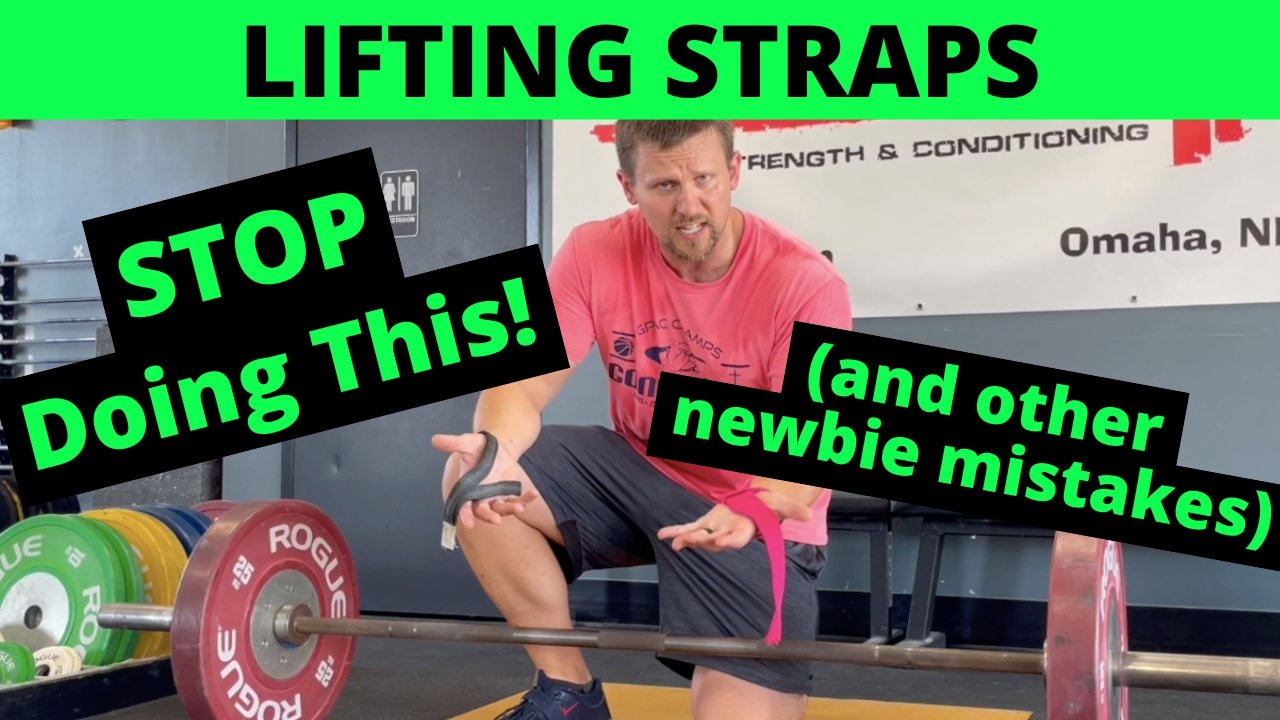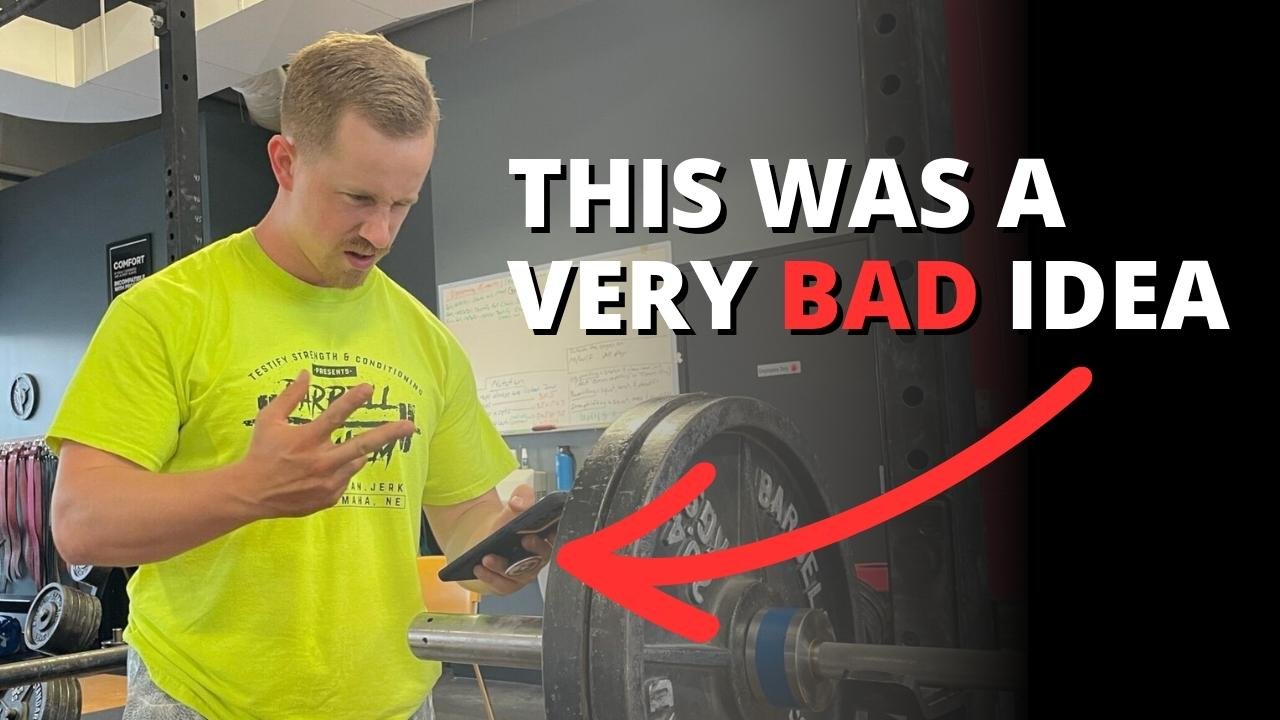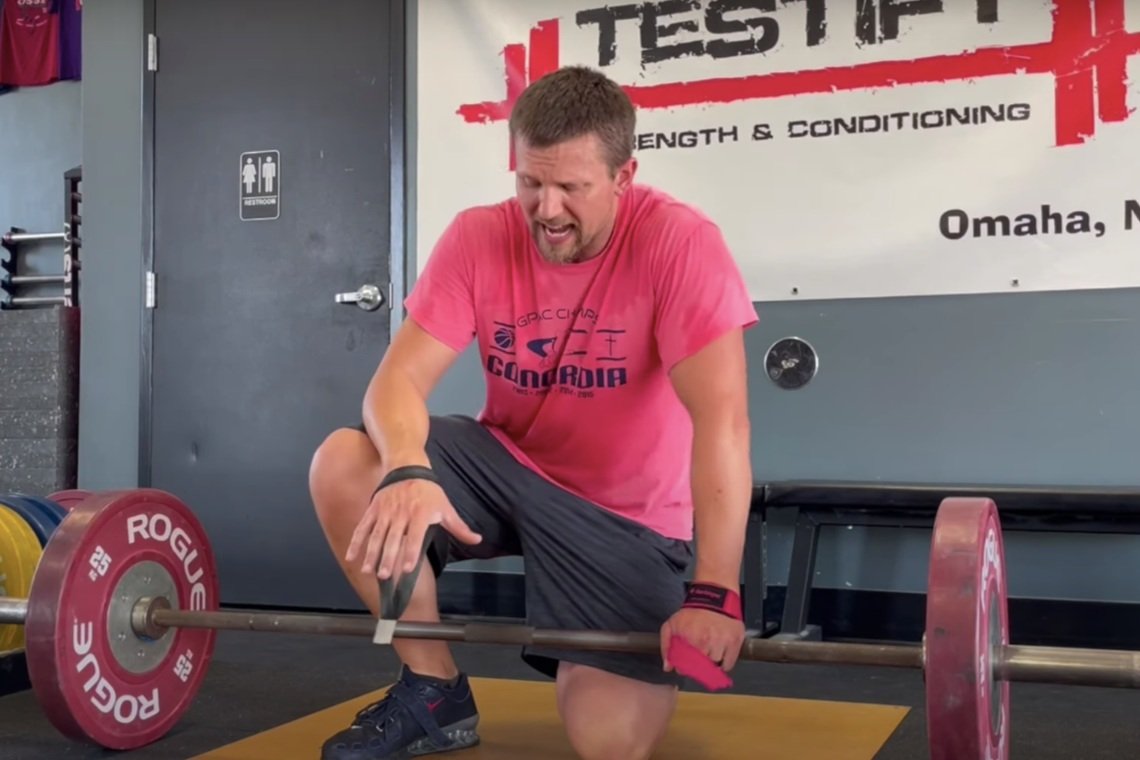Testify Citizen - October 30, 2023
/THIS WEEK'S SUBMISSION
From our video TINY GRANDMA SQUATS 205 LB! (click the title to watch):
Pops 355
Why leaned over????
Phil
Solid question – it’s a stronger position and makes better use of the musculature surrounding the hips and the knees. Trying to raise the chest too soon makes for a much more difficult squat.
ARTICLES & VIDEOS
Bench Press: He Should NOT Have Done This...
Phil addresses and helps you fix a common bench press error in this episode of our Two Minute Tactics. Click here to watch.
Lifting Straps | What You're Doing WRONG (common mistakes)
We cover several common mistakes that new lifters make with lifting straps (and how to fix them). Click here to read.
Blast from the Past: Weightlifting vs Powerlifting vs Hybrid Barbells in 2 minutes!
What's with the different markings on barbells? Phil quickly and simply explains what they mean, what purpose they serve, and how to know which one to use. Click here to watch.
Blast from the Past: Bar Math: Stop Doing This!
Quit using subtraction and division to load weight onto your bar! Share this with a friend who struggles with bar math, and if it's you, we can help. Click here to read.
NEW TESTIFY HOODIES ARE AVAILABLE!
Looking to train in style and comfort this fall? Get yourself a Testify hoodie - in practically any color! Get yours today and represent your favorite gym.
Click here to head to the Testify Store.
WHAT'S COMING UP
Below are a few of our upcoming events, and you can find out what else is on the calendar by heading to our events page at www.testifysc.com/events.
Free Intro to Deadlift Session
November 4, 2023
Are you interested in getting stronger? Book your free "Intro to Deadlift" session and learn to deadlift, meet some of our coaches, and see the gym! All ages and abilities are welcome.
Click here to book your free session.
Benching Bonanza! The Annual Testify Bench Press Jubilee
November 17, 2023
Benching Bonanza is a strength meet wherein the only contested lift is - you guessed it - the bench press. There will be one bar, and the meet will be conducted in a "rising bar" format, so the weight on the bar only goes up! It'll be a ton of fun, so come on out!
Click here to register or for more information.
Testify Christmas Classic
December 2, 2023
The annual Testify Christmas Classic is back, and you're invited! This is a weightlifting meet, so the contested lifts are the snatch and clean-and-jerk.
Click here to register or for more information.
IN OTHER NEWS . . .
This year, Testify Strength & Conditioning will be participating in Samaritan’s Purse Operation Christmas Child event as a way to support our community and beyond!
Would you like to join us in sending a shoebox filled with gifts and personal items to a child in need this Christmas? Your shoebox will be an expression of God’s love to a child in need around the world. Any shoebox will do, fill it with toys, personal care items, school supplies and accessories. You can choose to make your box specific to a boy or girl ages 2-14 years old. Fill out the envelope (located on the table outside the gym office) and add $10/box for shipping and attach it to your box.
Check out the table outside the gym office for all the details and how to pack a box. Our goal is to deliver 20 boxes to a local church drop-off site to be processed and sent out to the children. Shoeboxes need to be returned to Testify no later than November 13th.
If you have any questions please contact Barb at barb.mueller@testifysc.com.
THIS WEEK’S CONDITIONING
Option 1
Sled
Outdoors:
10 rounds of:
Push sled 100 ft
Pull sled 100 ft (hand over hand)
Indoors:
20 rounds of:
Push sled 50 ft
Pull sled 50 ft (hand over hand)
Compare to 2023.08.28.
Option 2
Bike/Row for 9 rounds:
1 min on
1 min off
Record distance for each round.
Compare to 2023.08.07.
Option 3
Outdoors:
5-10 rounds:
10 sledgehammer strikes (5R, 5L)
50 yd farmer carry (25 yd down-back)
Rest 1 minute
Indoors:
5-10 rounds:
10 sledgehammer strikes (5R, 5L)
100 ft farmer carry (50 ft down-back)
Rest 1 minute
Compare to 2023.07.10.
Option 4
5-8 rounds:
50 ft sled push
50 ft sled pull (hand over hand)
Row 1 minute
Rest 1 minute
This can also be done in a group of three where the sledder determines how long the other two people row and rest.
Compare to 2023.07.10.
Lifting Straps | What You're Doing WRONG (common mistakes)
/If you’re new to using lifting straps (or even if you’re not so new), there are a few common mistakes that you might be making. At best, these mistakes make the use of straps cumbersome, and at worst, these mistakes make straps a liability instead of an asset.
With that said, these mistakes are relatively easy to fix, and once we’ve solved them, you’ll never make them again, so let’s get to it.
As a quick side note, all of these mistakes and their solutions are far more easily seen and understood on video than in print, so be sure to watch the included video.
Figure 1: The correct position for straps (on the hand)
Mistake #1: Wearing straps in the wrong spot
Lifting straps are worn down on the hand (Figure 1) - not up on the wrist or arm. Although lifting straps are sometimes referred to as “wrist straps,” that can be a bit misleading - if you wear them on the wrist, you are wearing them too high. Whether it’s the type of DIY straps that we recommend (the black strap you see in these photos) or the “strap-and-loop” style of straps, be sure to wear them down on the hands.
See the included video for how to easily, cheaply, and quickly make yourself a pair of virtually indestructible lifting straps.
Mistake #2: Wrapping the straps in the wrong direction
When setting up and wrapping the strap around the bar, always wrap toward the thumb, i.e., toward the middle of the bar (Figure 2). Do not wrap the strap so that it heads toward the plates. This brings us to . . .
Figure 2: Correctly wrapping (the black strap) toward the middle of the bar
Mistake #3: Setting up the straps incorrectly
If you are using the “strap-and-loop” style of strap, make sure you have it positioned so that the strap points toward your thumb (Figure 3). If you have it set up so that it points toward your pinky, you won’t be able to wrap the strap in the correct direction (i.e., toward the middle of the bar). The straps for your right and left hands will need to be set up so that they mirror each other.
Figure 3: Positioning the strap so that it points toward the thumb
Mistake #4: Wrapping the strap multiple times
Wrap the strap around the bar once (Figure 4). That’s it - just once. Some straps do not have much excess length (like the black straps in these photos), so wrapping the strap around the bar won’t be a temptation anyway, but for straps that do have a lot of extra material, you still just wrap the strap once. Wrapping it around the bar multiple times is a waste of time and effort, and it doesn’t improve the grip of the strap. One time around.
Figure 4: wrap the strap only once as shown here. the extra material just hangs there.
Mistake #5: Wrapping in front of the bar
This will be obvious if you’ve used straps correctly, but it’s not very obvious for those who are new to straps - when you initially grab the bar, your palm goes in front of the bar, but the strap goes BEHIND the bar (Figure 5).
figure 5: correctly positioning the strap behind the bar when initially taking your grip
If you mess this up and put the strap in front of the bar (i.e., on the same side as your palm), the strap will not help your grip at all, and in fact, it will make the situation worse and make the bar harder to grip. The bar will simply want to roll right out of your hand, so be sure to put the strap behind the bar when you reach down to grab the bar.
As always, we hope these tips help you get stronger and live better.
(Some links may be affiliate links. As an Amazon Associate, Testify earns from qualifying purchases.)
If you found this helpful, you’ll love our weekly email. It’s got useful videos, articles, and training tips just like the one in this article. Sign up below, and of course, if you don’t love it, you can unsubscribe at any time.
At Testify, we offer small group training, private coaching (in-person or remotely via Zoom), online coaching, and form checks. Would you like to get quality coaching from a Starting Strength Coach?
Weightlifting vs Powerlifting vs Hybrid Barbells in 2 minutes!
/What's with the different markings on barbells? Phil quickly and simply explains what they mean, what purpose they serve, and how to know which one to use.
(This is a Blast from the Past video originally published on 02/12/22.)
At Testify, we offer small group training, private coaching (in-person or remotely via Zoom), online coaching, and form checks. Click the button below to get quality coaching from a Starting Strength Coach and start getting stronger TODAY.
Bar Math: Stop Doing This!
/(This is a Blast from the Past article originally posted on 10/01/21.)
Bar math can be tricky, and if you’re a new lifter (or even an experienced one!), you might find that simply loading the correct weight on the bar is one of the more difficult aspects of your training experience. Let’s solve this (if you like, you can just scroll to the end of this article and watch the video instead!).
First - what not to do. Do NOT use the “subtract-and-divide” (SAD) method to figure out your bar math. Here’s an example - we want 110 lb on the bar (i.e., 110 lb total - including the bar’s weight), so we subtract the 45 lb bar from 110 lb, and we get 65 lb left over. We then divide 65 by 2 since we have to split that 65 lb between each side of the barbell to get 32.5 lb, and now we need to figure out how to load 32.5 lb on each side.
Again - do NOT do this. Mathematically, yes, it makes sense, but in the long run, it’s neither the easiest nor the quickest way to go about this process. We’ve seen people break out calculators to do this, and we’ve even seen people working some long division to accomplish this process, but no matter what tools you have at your disposal, SAD isn’t very practical, and it’s rather error prone as well.
The best method is to simply load the largest possible plate (without going over your target weight) that you can every single time. Your brain works decently with subtraction and division, but it works quite a bit better with addition and multiplication, and this “largest possible plate” (LPP) method takes advantage of this fact. An additional advantage to this method is that you’ll start to memorize some “milestone weights” or “landmark weights” along the way (this will happen whether you mean to do so or not!), and this is extremely useful.
Let’s run through the 110 lb example again - this time using LPP. (Warning - this looks bad on paper, but it’s far easier in practice.)
Can I add a 45 lb plate (on each side)? 45 x 2 = 90, and adding 90 lb to the bar is too much, so no, I can’t. Move on.
Can I add a 25? 25 x 2 = 50, and 50 + 45 (bar’s weight) = 95, so yes, I can.
By the way, 95 lb is one of those landmark weights you’ll eventually have memorized, which is very useful as you’ll build upon that for other weights.
Now we’re at 95 lb. Can I add a 10? 10 x 2 = 20, and 20 + 95 = 115, and that’s too much, so no, I can’t add a 10. Move on.
We’re still at 95 lb. Can I add a 5? 5 x 2 = 10, and 10 + 95 = 105, so yes, I can.
Now we’re at 105 lb, and I’m close enough to 110 that I realize that I need 5 more lb total, so I simply add a 2.5 lb plate to each side, and I’m done. (Technically, there’s a little “subtract-and-divide” going on here at the end, but I get to do it with very small numbers, which is nice.)
To recap:
Adding 25s (i.e., one to each side) takes us to 95 lb (in total weight).
Adding 5s takes us to 105 lb.
Adding 2.5s takes us to 110 lb.
This is actually far simpler in practice than it looks on paper, but you’ll have to try it out to believe me. Again, all you need to do is put the largest possible plate on every single time without actually going above the weight that you’re trying to reach.
By doing this repeatedly as you train each day, you’ll eventually know that 25-lb plates take you to 95 lb, 45-lb plates take you to 135 lb, etc., and this type of accidental memorization speeds up the process even more. In the long run, if you force yourself to keep doing your bar math in this manner, you’ll be a faster and more accurate “bar mathematician” than if you stuck with the ol’ SAD method.
Feel free to check out our video on this topic, and as always, we hope this helps you get stronger and live better!
(Some links may be affiliate links. As an Amazon Associate, Testify earns from qualifying purchases.)









